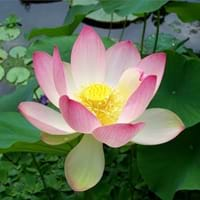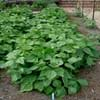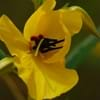Life Span
Annual
Perennial
Origin
Central America, South America
Southern Asia
Types
Bush Beans, Pole Beans
Not Available
Habitat
Cultivated Beds
Ponds
USDA Hardiness Zone
Not Available
9-12
AHS Heat Zone
Not Available
12-3
Sunset Zone
A1, A2, A3, H1, H2, 1a, 1b, 2a, 2b, 3a, 3b, 4, 5, 6, 7, 8, 9, 10, 11, 12, 13, 14, 15, 16, 17, 18, 19, 20, 21, 22, 23, 24
21,22
Habit
Vining/Climbing
Clump-Forming
Flower Color
Lavender
White, Red, Pink, Light Pink, Hot Pink, Rose, Coral
Flower Color Modifier
Bicolor
Bicolor
Fruit Color
Purple
Not Available
Leaf Color in Spring
Green, Purple
Lime Green, Sea Green
Leaf Color in Summer
Green
Lime Green, Sea Green
Leaf Color in Fall
Green
Lime Green, Sea Green
Leaf Color in Winter
Not Available
Not Available
Leaf Shape
Oval
Orbicular
Plant Season
Spring, Summer, Fall
Summer, Fall
Sunlight
Full Sun
Full Sun, Partial Sun
Type of Soil
Loam, Sand
Clay, Loam
The pH of Soil
Neutral, Alkaline
Neutral
Soil Drainage
Well drained
Poorly Drained
Bloom Time
Indeterminate
Late Spring, Early Summer, Summer, Late Summer
Tolerances
Drought
Wet Site
Where to Plant?
Container, Ground, Pot
Container, In Water, Pot
How to Plant?
Seedlings
From Rhizomes, Seedlings
Plant Maintenance
Medium
Medium
Watering Requirements
Do Not over Water, Requires regular watering, Water evenly
Requires 4 to 8 inches of water above the soil line
In Summer
Lots of watering
Lots of watering
In Spring
Moderate
Moderate
In Winter
Average Water
Average Water
Soil pH
Neutral, Alkaline
Neutral
Soil Type
Loam, Sand
Clay, Loam
Soil Drainage Capacity
Well drained
Poorly Drained
Sun Exposure
Full Sun
Full Sun, Partial Sun
Pruning
Remove damaged leaves, Remove dead branches, Remove dead leaves
Cut away fading foliage
Fertilizers
5-10-10 fertilizer
20N–4.4P–16.6K at 20-d intervals
Pests and Diseases
Alternaria Leaf Spot, Anthracnose, Aphids, Armyworm, Bacterial Blight
Aphids, Caterpillars
Plant Tolerance
Drought
Drought
Flower Petal Number
Single
Single, Double, Semi-Double
Foliage Texture
Coarse
Bold
Foliage Sheen
Matte
Matte
Attracts
Not Available
Beetles, Insects
Allergy
Not Available
Constipation
Aesthetic Uses
Not Available
Beautification
Beauty Benefits
Beautiful Skin
Promotes healthy skin, Provides herbal hair care
Environmental Uses
Fixes Nitrogen
Air purification
Medicinal Uses
Cancer, Diuretic, Homeopathy, Hypotensive, Miscellany
Antidiarrhoeal, Astringent, Cancer, Cardiotonic, Febrifuge, Hypotensive, Resolvent, Stomachic, Tonic
Part of Plant Used
Leaves, Seedpod, Seeds
Flowers, Leaves, Root, Seeds, Stem
Other Uses
Used for making brown dye, Used in biomass, Used in in reviving woollen fabrics
Leaves are used to wrap small parcels, Roasted seed is used as a coffee substitute, Root is used as a vegetable
Used As Indoor Plant
Yes
Yes
Used As Outdoor Plant
Yes
Yes
Garden Design
Container, Edible, Herb, Vegetable, Vine
Feature Plant, Tropical, Water Gardens
Botanical Name
PHASEOLUS vulgaris 'Purple King'
NELUMBO nucifera
Common Name
String bean, Field bean, French bean
East Indian Lotus, Sacred Lotus
In Hindi
String Bean
पवित्र कमल
In German
Bohne
Heiliges Lotus
In French
Haricot vert
Lotus Sacré
In Spanish
String Bean
loto sagrado
In Greek
Αμπελοφάσουλο
ιερή Lotus
In Portuguese
Feijão de corda
Lotus sagrado
In Polish
Fasolka szparagowa
Sacred Lotus
In Latin
Gloria Bean
sacra Lotus
Phylum
Magnoliophyta
Magnoliophyta
Class
Magnoliopsida
Magnoliopsida
Family
Fabaceae
Nymphaeaceae
Clade
Angiosperms, Eudicots, Rosids
Angiosperms, Eudicots
Tribe
Phaseoleae
Not Available
Subfamily
Faboideae
Nelumbonaceae
Number of Species
Not Available
Not Available
Importance of String Bean and Sacred Lotus
Want to have the most appropriate plant for your garden? You might want to know the importance of String Bean and Sacred Lotus. Basically, these two plants vary in many aspects. Compare String Bean and Sacred Lotus as they differ in many characteristics such as their life, care, benefits, facts, etc. Every gardener must at least have the slightest clue about the plants he wants to plant in his garden. Compare their benefits, which differ in many ways like facts and uses. The medicinal use of String Bean is Cancer, Diuretic, Homeopathy, Hypotensive and Miscellany whereas of Sacred Lotus is Antidiarrhoeal, Astringent, Cancer, Cardiotonic, Febrifuge, Hypotensive, Resolvent, Stomachic and Tonic. String Bean has beauty benefits as follows: Beautiful Skin while Sacred Lotus has beauty benefits as follows: Beautiful Skin.
Compare Facts of String Bean vs Sacred Lotus
How to choose the best garden plant for your garden depending upon its facts? Here garden plant comparison will help you to solve this query. Compare the facts of String Bean vs Sacred Lotus and know which one to choose. As garden plants have benefits and other uses, allergy is also a major drawback of plants for some people. Allergic reactions of String Bean are Not Available whereas of Sacred Lotus have Constipation respectively. Having a fruit bearing plant in your garden can be a plus point of your garden. String Bean has showy fruits and Sacred Lotus has no showy fruits. Also String Bean is not flowering and Sacred Lotus is not flowering . You can compare String Bean and Sacred Lotus facts and facts of other plants too.





